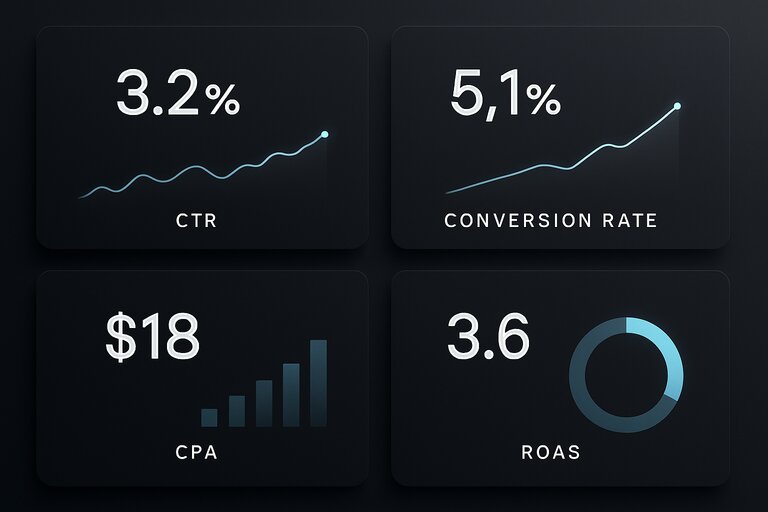Understanding Website Visitor Behavior
Website visitor behavior reveals significant insights that can help marketers tailor their strategies to meet user needs more effectively. By analyzing actions such as pages visited, time spent on the site, clicks, and navigation patterns, businesses gain a clearer understanding of user intent. These behaviors serve as the foundation for implementing targeted marketing efforts that drive conversions.
Some visitors may linger on product pages or repeatedly return to specific sections, indicating interest but hesitation. Others might abandon shopping carts, signaling potential obstacles in the purchase process. Recognizing these subtle signals enables marketers to address concerns promptly and personalize their outreach. Behavior analysis involves tracking both quantitative metrics and qualitative indicators to form a complete picture.
The Importance of Retargeting in Digital Marketing
Retargeting serves as a powerful means to reconnect with visitors who have interacted with a website but left without completing a desired action. It helps maintain brand visibility and encourages users to return, increasing the chance of conversion. By re-engaging interested individuals, retargeting addresses the common challenge of visitor drop-off.
Rather than relying solely on new traffic, it focuses on prospects who have already expressed interest, which often results in higher engagement rates. This strategy extends beyond typical advertising by delivering personalized messaging based on the visitor’s previous activity. Consequently, it fosters a sense of relevance and immediacy that generic ads cannot match.
Advanced Retargeting Strategies Explained
Moving beyond basic retargeting, advanced techniques offer more precise targeting and improved campaign effectiveness. Such methods utilize sophisticated algorithms and data analysis to tailor advertisements dynamically for each user segment.
One approach involves leveraging machine learning to predict which visitors are more likely to convert. This enables marketers to allocate resources more efficiently, targeting those with the highest potential return. Additionally, combining retargeting with user behavior analytics allows campaigns to change messaging depending on the visitor’s position within the sales funnel.
For example, an early-stage browser might receive informational ads, while a cart abandoner is shown incentives or reminders. Personalization plays a crucial role by making ads more relevant and increasing the likelihood of driving users back. Creative variation, frequency capping, and timing optimization all contribute to refined retargeting strategies that yield measurable results.
Segmenting Your Audience for Better Results
Segments may be created using criteria such as demographic details, browsing history, engagement levels, or purchase behavior. Tailoring content to these categories improves effectiveness by avoiding generic messages that may not align with user interests. Breaking down audiences also supports the allocation of budget according to segment value and potential.
For instance, high-intent users can receive more frequent or premium ads, while casual browsers are engaged with lower-touch approaches. Fine-tuning messaging according to segmentation results in higher click-through rates and better conversion metrics. It also fosters brand loyalty by showing customers that their preferences are recognized and respected.
Utilizing Dynamic Ads to Increase Engagement
Dynamic ads adjust their content automatically based on user data and behavior, making them highly effective for retargeting campaigns. Rather than static ads, these adapt to showcase products or offers that align with the individual visitor’s interests or actions.
Dynamic ads also accommodate real-time updates, reflecting inventory changes or promotions. This ensures users always receive the most current and appealing content. Because of their customized nature, dynamic ads often achieve better engagement and conversion rates compared to one-size-fits-all advertisements. Their versatility fits well within complex marketing funnels where user preferences evolve quickly.
Integrating Retargeting with Multi-Channel Campaigns
Combining retargeting efforts with campaigns across multiple channels amplifies exposure and reinforces messaging. Users interact with brands through various platforms including social media, email, search engines, and display networks. Coordinated strategies increase the frequency and consistency of contact. A seamless user journey is created when retargeting messages complement communications received via email or social channels. This builds trust and encourages interaction on the preferred platform.
Furthermore, multi-channel integration allows marketers to experiment with different formats and creatives, optimizing performance through cross-channel data insights. The results distribute risk and enhance coverage, reaching users wherever they spend time online. The synergy between channels leads to a more comprehensive brand presence, enhancing recognition and prompting user action. This holistic approach is essential for meeting audience demands in today’s complex communication environment.
Measuring the Effectiveness of Retargeting Campaigns
Quantifying the success of retargeting campaigns is fundamental to improving marketing outcomes. Key performance indicators such as click-through rate (CTR), conversion rate, cost per acquisition (CPA), and return on ad spend (ROAS) provide insight into campaign efficiency.
Tracking these metrics requires setting clear objectives and using analytics tools capable of capturing user interactions across touchpoints. Attention must be paid to attribution models to correctly assign credit to retargeting efforts. Analyzing performance data highlights areas for improvement, whether related to audience targeting, creative elements, or timing.
Continuous optimization based on these insights maximizes the impact of marketing expenditures. Regular reporting ensures transparency and accountability within marketing teams, supporting strategic decision-making and resource allocation.
Best Practices for Ethical and Effective Retargeting
Respecting user privacy and preferences remains paramount when implementing retargeting campaigns. Transparency about data collection and providing easy options for opting out build consumer trust and comply with regulations. Frequency capping prevents excessive ad exposure that may annoy or alienate potential customers. Balancing persistence with sensitivity creates a positive brand impression.
Clear messaging and value-driven content help avoid intrusive advertising experiences. Retargeting should add value by reinforcing relevance rather than merely repeating promotions. Collaborating with trusted ad platforms and maintaining updated privacy policies ensures campaigns remain both effective and responsible.
Future Trends in Retargeting Technology
Retargeting continues to
evolve alongside technological
advancements. The
incorporation of artificial
intelligence and machine learning
enhances predictive capabilities
and personalization.
Besides cookies, emerging tracking methods such as contextual targeting and first-party data collection are gaining traction due to privacy concerns and regulatory changes.
Interactive ad formats and augmented reality experiences promise higher engagement by offering immersive campaigns tailored to individual preferences. Integration with voice search and smart devices is likely to expand the scope and precision of retargeting efforts. As the ecosystem adapts, marketers will have new tools to connect with audiences in innovative ways.
Conclusion and Key Takeaways for Marketers
Understanding visitor behavior forms the cornerstone of effective retargeting. By reconnecting with interested users through personalized and timely ads, marketers can increase conversion rates and build lasting relationships. Advanced strategies leveraging segmentation, dynamic ads, and multi-channel integration offer competitive advantages. Monitoring performance and adhering to ethical standards sustain campaign success.
Looking ahead, ongoing innovation in technology will continue to refine retargeting’s impact, making it an indispensable element of comprehensive marketing strategies. For businesses aiming to enhance their digital presence, focusing on sophisticated retargeting efforts presents clear opportunities to convert browsers into loyal customers.




